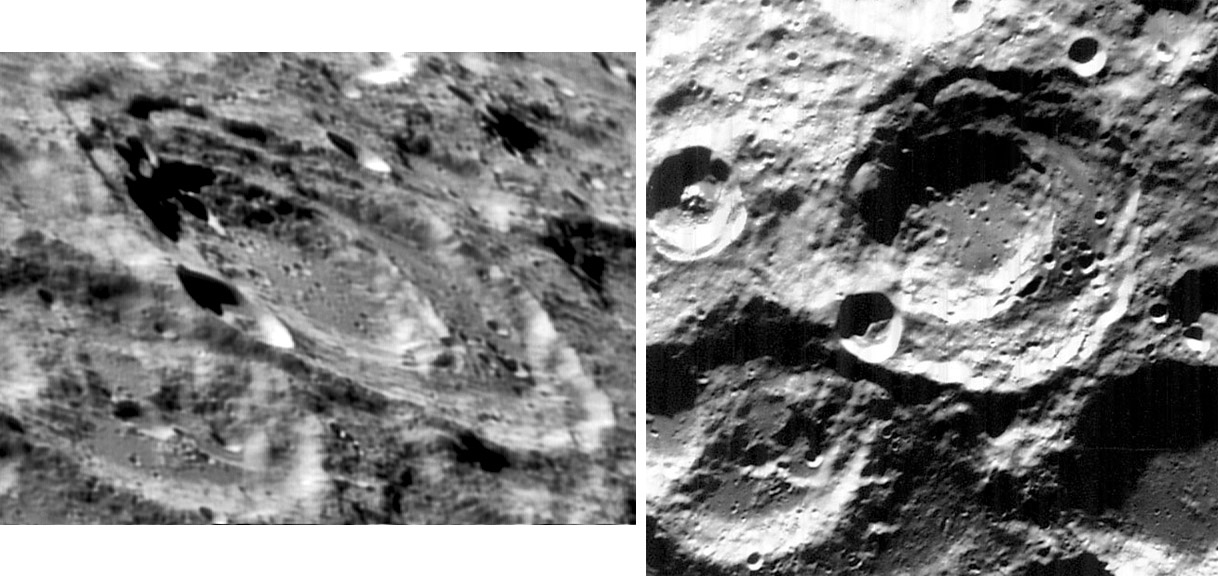
Left image by Mike Wirths and right from Lunar Orbiter IV processed by Charles Byrne
Random impacts should occasionally be centered within pre-existing craters. Here is one of the most famous near-misses. Boussingault, down near the lunar south pole, is a crater within a crater. Because both are large, it is easy to see that both are impact structures - there is no waffling about possible volcanic origins for either. It is amazing that the younger inner crater, Boussingault A, did so little damage to its surrounding older crater. You can see on the Lunar Orbiter view where the continuous ejecta of “A” is draped over the terraces of Boussingault - it has a well-defined scarp where it stopped flowing uphill. It is also intriguing that the moat area between the two is filled with a smooth plains material that seems to embay the edges of “A” and thus must be younger than it. And the smaller crater (K) on the joint rim of Boussingault and “A” appears to have done no damage on its right side but its left side has covered Boussingault’s wall and apparently caused material to slump into “A”. It is remarkable that sometimes a tremendous impact producing a crater tens of kilometers across does so little damage to its immediate surroundings, and other times causes huge landslides and dumps great amounts of ejecta everywhere.
Technical Details:
18″ Starmaster dob, 2.5X’s Powermate barlow, R/IR True Tech filter, Infinity 2-2 camera, Registax 3 and Photoshop CS/ Images Plus.
Related Links:
Rükl plates 74 & 75
Yesterday's LPOD: Is Marth a Concentric Crater?
Tomorrow's LPOD: Unfull Moon
COMMENTS?
Register, Log in, and join in the comments.



